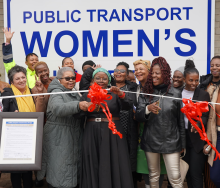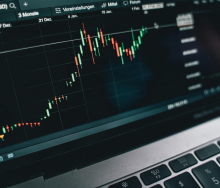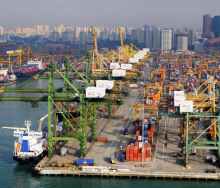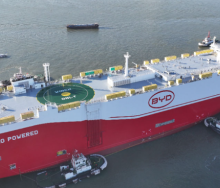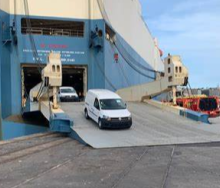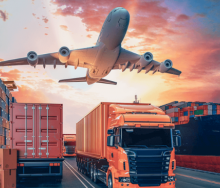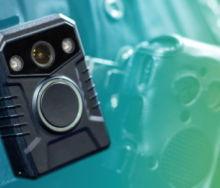Huawei Technologies has opened a new warehousing facility which it believes is ideal for South Africa’s challenging conditions, thanks to a focused combination of design and dynamics summarized as GEM – green energy, e-security, and modern logistics
The premises in Johannesburg cover 30 000 square meters (sqm) and are equipped with advanced AI for access control and the latest in warehouse management system (WMS) applications.
The warehousing capacity itself is 14 000 sqm, capable of storing 12 000 sqm of stock and, according to Stevin Du Plessis, logistics manager for Huawei South Africa’s Supply Chain Business Department, is split in two: one section is dedicated to in- and outbound tech movement, while the other handles localised supplies and spare parts.
Huawei SA’s chief executive, Will Meng, said great emphasis had been placed on the facility’s energy efficiency and, as such, is equipped with the latest solar panelling tech and related support capability.
He told a launch gathering at the facility on Tuesday that warehousing is subject to a "rapidly evolving marketplace," where sustainability has taken centre stage and that Huawei is at the forefront of profound transformation.
But the smart tech developer believes the real magic is happening inside the facility’s premier warehouse, which is operated by five automated guided vehicles (AGVs) and three automated guided forklifts (AGFs) rather than an overabundance of pickers.
Du Plessis explained that the latest WiFi routing technology was utilised to ensure automation requirements were met, effectively eliminating connectivity downtime.
In addition, about 60 live cams throughout the warehouse “means there is no blind spot.
“It also gives us a certain kind of AI functionality where we are able to identify certain things.”
He said, for example, if there was human interference in the automated process of the warehouse’s stock arrangement and movement, the AI-driven security system of the warehouse could immediately flag it.
“It’s one of the reasons why this is a 100% accurate warehouse without any losses.”
Thanks to the integration of seamless in- and outflow systems and the deployment of AGVs and AGFs, Huawei has increased human-error elimination, unnecessary picking movement through centralising stock replenishment and dispatch procedures, and decreased occupational hazard risks by limiting unnecessary human involvement.
“The system understands what items are coming in, where is the best place to put them based on demand and frequency, and through grouping goods with similar items, ensures practical replenishment for fast and effective dispatch.”
Officially, Huawei said the facility’s picking efficiency was between 60 and 110 line items per hour, thanks to the AGVs and AGFs, respectively capable of 600 kilograms and a tonne with each move.
When the machine batteries run low, they automatically go to recharge to avoid lithium-ion dips lower than 30% but, based on the required AI-assessed workload at the time, will recharge accordingly.
If it’s peak hour, for example, an AGV or AGF will recharge up to the level required to finish its workload before going for a full top-up.
Principal business and strategy consultant, Alvin Korkie, said through advanced AI methods, Huawei has been able to flip the proverbial script on traditional warehouse practice.
Whereas picking has always been based on persons-to-goods, “we have been able to turn that around to goods-to-persons”.
“Thanks to the intelligence of the WMS, we know exactly what orders have been placed and, during downtime, pickers fetch replenishment stock for our machines to move into the respective areas of processing.
“It drives down the overtime of hi-rack pickers by about 150 hours a month, saving time and cutting down on human fatigue.
“Our solution isn’t human-driven,” Korkie said.
“It’s tech-driven.”

